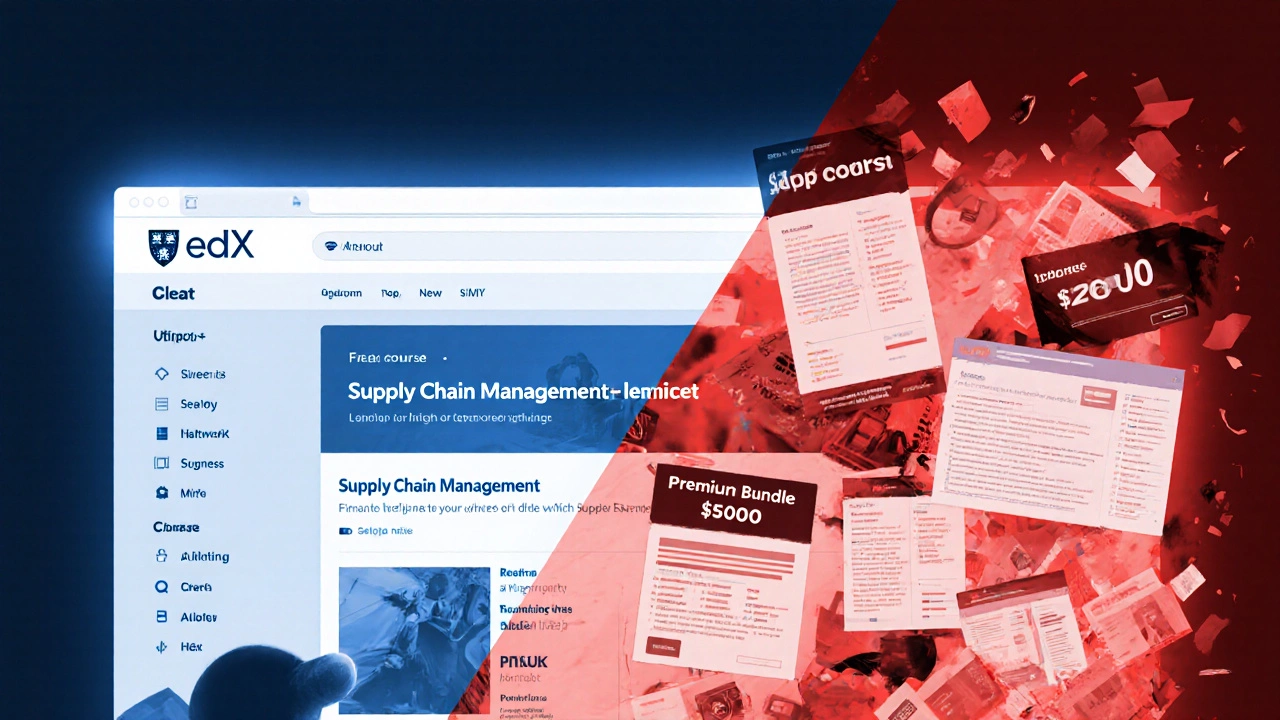eLearning Platform Recommender
Find Your Perfect Learning Match
Answer a few questions to get personalized recommendations based on your goals and needs.
If you're trying to pick the best eLearning platform, you're not alone. Millions of people-from students to corporate trainers-face the same choice every year. But here’s the truth: there’s no single "best" platform. What works for a high school student preparing for exams won’t work for a nurse upgrading her certifications, and neither will fit a small business training 50 employees. The right platform depends on what you need, not what’s trending.
What makes an eLearning platform "best"?
Before we look at options, let’s cut through the noise. A good eLearning platform isn’t just about slick videos or fancy animations. It’s about delivering results. Look for these five things:
- Content quality - Is the material created by real experts, or just repackaged YouTube clips?
- Usability - Can you find lessons quickly? Can you track progress without jumping through hoops?
- Device support - Does it work on your phone, tablet, and laptop without crashing?
- Assessment tools - Are there quizzes, assignments, or projects that actually test what you’ve learned?
- Support and community - Can you get help when you’re stuck? Are there forums, live Q&As, or mentors?
Platforms that score high on all five tend to keep users longer. Those that skip even one? You’ll quit within a week.
Top eLearning platforms in 2025
Here are the platforms that actually deliver, based on user feedback, course completion rates, and institutional adoption this year.
Coursera
Coursera is the go-to for university-level learning. It partners with 200+ universities and companies like Google and IBM. If you need a certificate that employers recognize-especially in data science, business, or IT-this is your best bet.
Its strength? Structured learning paths. For example, the "Google Data Analytics Professional Certificate" includes seven courses, hands-on projects in real tools like Excel and Tableau, and ends with a portfolio you can show to recruiters. Completion rates are around 30%, which is high for online learning.
Downside? It’s expensive if you pay full price. But you can audit most courses for free or apply for financial aid.
Udemy
Udemy is the Amazon of online courses. Over 200,000 courses on everything from Python to pottery. The catch? Anyone can upload a course. That means quality varies wildly.
But here’s the trick: look for courses with 4.5+ stars and at least 10,000 students. The top sellers-like "The Complete Web Development Bootcamp" by Angela Yu-have helped over 1.2 million people switch careers. Prices often drop to under $15 during sales.
Best for: Learners who want flexibility, low cost, and niche skills. Worst for: Those needing accredited credentials.
LinkedIn Learning
If you’re already on LinkedIn, this is the easiest upgrade. It’s owned by Microsoft and integrates directly with your profile. Complete a course? It shows up on your profile under "Licenses & Certifications."
The content leans professional: project management, leadership, Excel, Adobe Creative Suite, and soft skills. It’s not heavy on theory. You’ll learn how to write a better email, run a meeting, or use pivot tables-right away.
It’s included with most LinkedIn Premium subscriptions ($25/month). If you’re job hunting or climbing the corporate ladder, it’s a no-brainer.
edX
Founded by Harvard and MIT, edX is the academic heavyweight. It offers free courses from top universities, with paid certificates or full degree programs.
Its MicroMasters programs-like the one from MIT on Supply Chain Management-are stackable toward a full master’s degree. If you’re serious about formal education without quitting your job, edX is unmatched.
Most courses are free to audit. Certificates cost $50-$300. It’s slower-paced than Coursera, but deeper.
Thinkific
Thinkific isn’t for learners. It’s for creators. If you’re a teacher, coach, or small business owner building your own course, this is the platform to use.
It lets you design, sell, and deliver courses without coding. You get custom branding, payment processing, email automation, and student dashboards. Over 100,000 course creators use it.
It’s not a place to take courses-it’s where you build them. But if you’re looking for a platform that feels personal and professional, Thinkific’s interface is one of the cleanest.
Who should use what?
Let’s cut the guesswork. Here’s a quick guide:
| User Type | Best Platform | Why |
|---|---|---|
| Student aiming for a degree | edX | University-backed, stackable credits, affordable certificates |
| Professional seeking career advancement | LinkedIn Learning | Seamless profile integration, practical skills, employer recognition |
| Aspiring tech professional | Coursera | Industry certifications (Google, IBM), project-based learning |
| Self-paced learner on a budget | Udemy | Low cost, huge variety, frequent sales |
| Coach or small business owner | Thinkific | Build and sell your own courses, full control |

Red flags to avoid
Not all platforms are created equal. Watch out for these traps:
- "Guaranteed job placement" - No platform can guarantee a job. If they say they can, they’re overselling.
- Too many upsells - If the platform pushes you to buy a $500 "premium bundle" after a $10 course, walk away.
- No instructor credentials - Check the teacher’s LinkedIn or resume. Are they actually working in the field?
- Zero interaction - If there are no forums, no Q&A, no feedback, you’re just watching videos alone. That’s not learning-it’s passive consumption.
- Mobile-only experience - If the platform doesn’t work well on desktop, you’ll struggle with assignments, downloads, or projects.
What’s new in 2025?
This year, AI is changing how platforms work-not replacing teachers, but helping learners.
Coursera now offers AI tutors that give instant feedback on coding assignments. Udemy’s AI recommends courses based on your LinkedIn activity. LinkedIn Learning uses AI to suggest skills gaps based on your job title and industry trends.
But here’s the catch: AI features are only useful if the core content is strong. Don’t buy a platform just because it says "powered by AI." Ask: Does it help me learn faster or deeper? If not, it’s just a gimmick.

Free alternatives worth trying
You don’t need to pay anything to learn. Here are three free, high-quality options:
- Khan Academy - Best for math, science, and high school subjects. Completely free, no ads, no sign-up required.
- MIT OpenCourseWare - Full university courses from MIT, including lecture notes, exams, and syllabi. No certificates, but the content is gold.
- YouTube channels - Channels like freeCodeCamp, Corey Schafer (Python), and CrashCourse (history, science) offer structured, professional content for free.
Many learners start here, then move to paid platforms when they need certifications or structured support.
Final tip: Try before you commit
Don’t sign up for a $200 course on day one. Most platforms offer free trials or free course audits. Use them.
Take one free course on Coursera. Try three free lessons on Udemy. Use LinkedIn Learning’s 30-day trial. See how the interface feels. Do you get excited to open the app? Or does it feel like homework?
The best eLearning platform is the one you’ll actually use. Not the one with the most bells and whistles. Not the one your friend swears by. The one that fits your life, your goals, and your learning style.
Is Coursera better than Udemy?
It depends on your goal. Coursera is better if you need accredited certificates from universities or companies like Google. Udemy is better if you want low-cost, niche skills like Photoshop tricks or TikTok marketing. Coursera is structured like a university; Udemy is like a marketplace. Choose based on whether you need recognition or just practical knowledge.
Can I get a job after using an eLearning platform?
Yes-but not because of the platform. You get hired because of what you can do. A certificate from Coursera or LinkedIn Learning helps, but employers care more about your portfolio, projects, and how you explain your skills in an interview. Use the platform to build real work, not just collect badges.
Are free platforms good enough?
Absolutely. Khan Academy, MIT OpenCourseWare, and top YouTube channels offer university-level content for free. The downside? No certificates, no feedback, and no structured deadlines. If you’re self-motivated and just want to learn, free is perfect. If you need proof for your resume, you’ll eventually need to pay for certification.
Which platform is best for non-native English speakers?
Coursera and edX offer subtitles in 20+ languages for most courses. Udemy lets instructors upload subtitles, so quality varies. LinkedIn Learning has good English-only content but doesn’t support many languages. For non-native speakers, start with courses that have closed captions and read the transcripts. Practice listening and reading at the same time.
How much time should I spend on an eLearning platform each week?
Five hours a week is the sweet spot for most adults. That’s one hour a day, five days a week. More than that? You’ll burn out. Less? You won’t retain anything. Consistency beats marathon sessions. Even 20 minutes a day, five days a week, will get you further than 10 hours once a month.
Next steps
Don’t wait for the "perfect" platform. Start with one free course today. Pick something that excites you-even if it’s outside your field. Watch the first video. Try the first quiz. See how it feels.
After that, ask yourself: Did I learn something I can use tomorrow? If yes, keep going. If no, try another. The best platform isn’t the most expensive. It’s the one you stick with.
